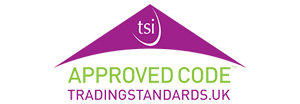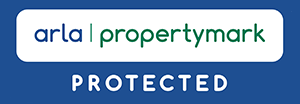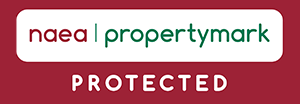If you’re considering your financing options, you may be considering several types of mortgages.
With mortgage specific jargon to decipher and many different types of mortgages available, it can be difficult to know which one is the right fit.
Horton and Garton are not financial advisors and recommend all home movers speak to a professional and qualified financial advisor or mortgage broker who can assist with their requirements.
This article intends to offer a concise overview of the types of mortgages available.
Understanding Mortgages
Before we dive into the different types of mortgages it’s useful to have a broad understanding of the terminology and jargon used when buying a property with a mortgage.
How do mortgages work?
The borrower’s borrowing power, or the amount they can borrow, is determined by their income, credit score, and other financial factors. The loan-to-value (LTV) ratio, which is the proportion of the property’s value that the borrower is borrowing, is also a key factor in determining the mortgage amount. Mortgages can have different terms, such as fixed or variable interest rates and repayment periods.
Key Mortgage Terms
It is important for borrowers to understand key mortgage terms, such as the interest rate, which is the cost of borrowing money, and the term, which is the length of time the borrower has to repay the loan. Repayment options, such as interest-only or capital repayment, also affect the amount of monthly repayments. Equity, or the value of the property that the borrower owns outright, can increase over time as the borrower makes payments and the property’s value appreciates.
Types of Mortgages
When it comes to buying a property, there are various types of mortgages available in the market. Each type of mortgage has its own set of features and benefits. Here are some common types of mortgages:
Fixed-Rate Mortgages
Fixed-rate mortgages have a fixed interest rate for a set period, usually between two to five years. This type of mortgage offers stability and predictability, as the monthly payments remain the same throughout the fixed period.
Variable Rate Mortgages
Variable rate mortgages have an interest rate that can change at any time. This type of mortgage can be risky as the monthly payments can go up or down depending on the interest rate.
What are the main differences between fixed-rate and variable-rate mortgages?
Fixed-rate mortgages have a set interest rate for a predetermined period, usually 2-5 years, while variable-rate mortgages have an interest rate that fluctuates with the base rate. Fixed-rate mortgages offer stability, while variable-rate mortgages offer flexibility.
Tracker Mortgages
Tracker mortgages are linked to the Bank of England’s base rate. The interest rate on this type of mortgage moves up or down in line with the base rate.
Interest-Only Mortgages
Interest-only mortgages require the borrower to only pay the interest on the loan amount for a set period. At the end of the term, the borrower must pay the full amount borrowed.
How do interest-only mortgages work, and what are their benefits?
Interest-only mortgages require borrowers to pay only the interest on the loan for a set period, usually 5-10 years. After this period, the borrower must pay both the interest and the principal. These mortgages offer lower monthly payments but may be riskier in the long run.
Repayment Mortgages
Repayment mortgages require the borrower to pay both the interest and the capital amount borrowed each month. This type of mortgage ensures that the borrower will repay the loan in full by the end of the term.
Offset Mortgages
Offset mortgages allow borrowers to offset their savings against their mortgage debt. The interest charged on the mortgage is calculated on the difference between the mortgage balance and the savings balance.
Can you explain the advantages of an offset mortgage?
An offset mortgage links a borrower’s savings account to their mortgage, reducing the amount of interest paid on the loan. The borrower’s savings account is not used to pay off the mortgage but instead offsets the interest charged on the loan, allowing the borrower to pay off their mortgage faster.
Buy-to-Let Mortgages
Buy-to-let mortgages are designed for those who want to purchase a property to rent out. The interest rates on these mortgages are usually higher, and the deposit required is also higher.
Guarantor Mortgages
Guarantor mortgages require a third party to guarantee the loan repayments if the borrower defaults. This type of mortgage is suitable for those who have a low credit score or no deposit.
100% Mortgages
100% mortgages allow borrowers to borrow the full purchase price of the property without a deposit. It’s worth noting that this type of mortgage is not widely available.
Green Mortgages
Green mortgages are designed for those who want to make energy-efficient improvements to their property. These mortgages offer lower interest rates and can help to reduce energy bills.
Mortgage Rates, Fees and Payments
Interest Rates
The interest rate can be fixed or variable, depending on the type of mortgage. A fixed interest rate remains the same throughout the mortgage term, while a variable interest rate can fluctuate based on market conditions. Borrowers should thoroughly research and compare interest rates from different lenders to ensure they are getting the best deal.
Monthly Payments
The monthly payment is calculated based on the interest rate, the principal amount borrowed, and the length of the mortgage term. Borrowers should ensure they can afford the monthly payments before taking out a mortgage.
Overpayments
This can help reduce the overall interest paid and shorten the length of the mortgage term. However, some lenders may charge fees for overpayments, so borrowers should check with their lender before making any overpayments.
Mortgage Fees
Mortgage fees can include arrangement fees, valuation fees, legal fees, and early repayment charges. Arrangement fees are often a percentage of the loan amount, and borrowers should compare these fees between lenders. Valuation fees cover the cost of a survey on the property, and legal fees cover the cost of conveyancing. Early repayment charges apply if the borrower repays the mortgage before the end of the deal period. Borrowers should check the fees carefully before taking out a mortgage.
Buying a Property with a Mortgage
We hope this article has offered some clarity on the different type of mortgages available.
If you’re considering buying a property with a mortgage it is prudent to speak with a reputable, professional financial advisor who can provide tailored advice.
As always, Horton and Garton are on hand to assist with property-related matters; get in touch.





